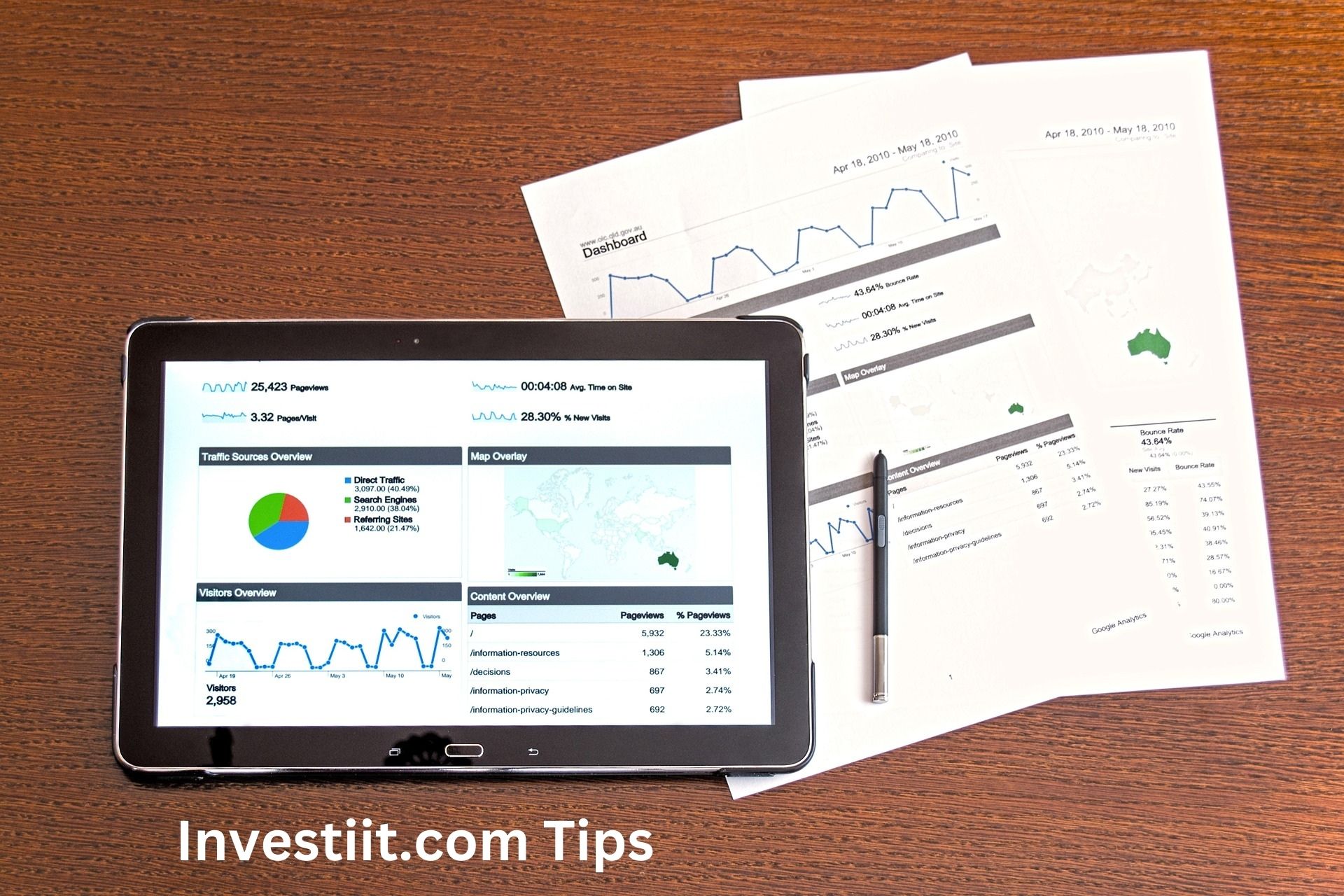In today’s data-driven world, organizations face the daunting task of managing vast volumes of data originating from multiple, often disparate, sources. Data-driven decision-making requires seamless integration and transformation of this data to derive actionable insights. Without the right tools, businesses risk dealing with inefficient processes, data quality issues, and a lack of timely insights, which ultimately leads to lost opportunities.
Enter SQL Server Integration Services (SSIS) 816 — a comprehensive data integration tool designed to streamline data movement, transformation, and loading (ETL) tasks. With SSIS-816, businesses can efficiently manage complex data workflows, integrating data from diverse systems, optimizing performance, and ensuring data quality. This article dives deep into SSIS-816, exploring its critical components, features, best practices, advanced capabilities, and real-world applications.
Contents
- 1 SSIS-816 FAQ: Frequently Asked Questions
- 1.1 1. What is SSIS-816, and how does it differ from other versions of SSIS?
- 1.2 2. What types of data sources can SSIS-816 integrate with?
- 1.3 3. How can I optimize the performance of SSIS-816?
- 1.4 4. Can SSIS-816 handle large data volumes effectively?
- 1.5 5. What are the common error-handling mechanisms in SSIS-816?
- 1.6 6. Can SSIS-816 be integrated with cloud services?
- 1.7 7. How does SSIS-816 ensure data quality during the ETL process?
- 1.8 8. What are the licensing requirements for SSIS-816?
- 1.9 9. Can SSIS-816 be automated?
- 1.10 10. Is SSIS-816 suitable for small businesses, or is it only for large enterprises?
- 1.11 11. How does SSIS-816 ensure security during data integration?
- 1.12 12. How do I get started with SSIS-816?
What is SSIS-816?
SSIS-816 is a vital component of Microsoft SQL Server that facilitates data integration and workflow automation. Primarily designed for ETL processes, SSIS-816 allows organizations to extract data from various sources, transform it to meet specific business requirements, and load it into target systems, such as data warehouses or business intelligence platforms.
SSIS-816 is used across industries by data analysts, database administrators, and IT professionals to automate repetitive tasks, optimize performance, and integrate data seamlessly. It not only simplifies complex data processing but also enhances the accuracy and reliability of the data, making it a cornerstone for efficient data management strategies in modern enterprises.
Critical Components of SSIS-816
Understanding the core components of SSIS-816 is essential for leveraging its full potential. Each component plays a crucial role in the creation, execution, and optimization of ETL processes:
- Data Flow Tasks:
The backbone of any SSIS package, the Data Flow Task enables the movement of data between sources and destinations. Within the data flow, users can implement multiple transformations to clean, manipulate, and enrich data, ensuring that it meets the desired format before loading. - Control Flow:
Control Flow manages the sequence of operations within an SSIS package. It determines the flow of tasks, including how and when they are executed. Control Flow can include loops, conditions, and task dependencies, giving users flexibility in how their data integration processes are structured. - Event Handlers:
Event Handlers respond to runtime events such as task success, failure, or completion. They are particularly useful for logging, error handling, and sending notifications when a process encounters issues. - Variables:
Variables store values that can be reused throughout the execution of an SSIS package. These values can be static or dynamic, depending on the specific needs of the ETL process, providing a powerful way to control workflows and automate decisions based on the data.
Key Features of SSIS-816
SSIS-816 brings a rich set of features to the table, designed to optimize data integration processes. Here’s a closer look at the most prominent features:
Data Transformation Capabilities
Data transformation is at the heart of the ETL process, and SSIS-816 excels at it. The tool allows users to manipulate data in various ways to ensure it meets the destination’s requirements. Key transformations include:
- Data Conversion:
Data formats vary significantly across systems. The Data Conversion transformation ensures that data types are converted correctly to ensure compatibility between source and target systems. For instance, dates may need to be transformed into a uniform format or integers converted to decimals, depending on the target system. - Lookup Transformation:
The Lookup transformation enriches data by cross-referencing external data sources. This is particularly useful in scenarios where datasets need to be validated or augmented with additional information from other tables or systems, ensuring that the final data is complete and accurate. - Conditional Split:
This transformation allows users to apply different processing logic to subsets of data based on specified conditions. For example, data could be split based on region, time zone, or sales figures, enabling custom transformations for each subset before loading into the destination system.
Integration with Various Data Sources
One of SSIS-816’s greatest strengths is its versatility in handling multiple data sources. In today’s enterprise environments, data rarely comes from a single system. Organizations collect data from various databases, flat files, APIs, and third-party systems, making integration critical.
Supported Data Sources include:
- SQL Server: Seamless integration with Microsoft’s flagship database system is a given, offering optimized performance for SQL Server-based data.
- Oracle: SSIS-816 supports Oracle databases, enabling organizations to bridge the gap between Microsoft and Oracle ecosystems.
- Flat Files (CSV, TXT): Handling of flat files like CSVs or text files allows for easy integration with legacy systems and external data providers.
- Excel: Businesses rely heavily on Excel, and SSIS-816 allows for easy import and export of data to and from Excel workbooks.
- XML and Web Services: For businesses using XML or APIs, SSIS-816 enables integration with structured data from web services, further broadening its applicability.
- ODBC and OLE DB: Support for these protocols ensures compatibility with a wide range of third-party systems, giving businesses flexibility in how they manage their data.
With this broad compatibility, SSIS-816 allows businesses to unify data from multiple platforms into a cohesive format, ready for analysis, reporting, or storage in a centralized database.
Error Handling and Logging
In any data integration process, errors are inevitable. However, the way errors are managed can make or break the reliability of the data. SSIS-816 provides powerful tools for error handling and logging, allowing users to diagnose and resolve issues effectively.
- Error Outputs:
When a row fails to process due to data inconsistencies or other issues, SSIS-816 allows these error rows to be redirected to a designated output for further investigation. This prevents the entire ETL process from failing and ensures that problematic data can be reviewed and corrected without disruption. - Event Handlers:
Event Handlers enable users to create workflows that respond automatically to specific runtime events, such as task failures or data validation issues. For example, if a data import fails due to a missing file, an event handler can be triggered to alert administrators or attempt a retry, minimizing downtime and ensuring smoother operations.
Performance Optimization
SSIS-816 is designed with performance in mind, particularly when handling large datasets. Several features are built in to help optimize processing speed and ensure efficient data integration.
- In-Memory Processing:
By processing data in memory, SSIS-816 minimizes the need for disk access, significantly reducing the time required for data transformation and movement. This is particularly beneficial when dealing with large datasets or complex transformations. - Parallel Execution:
SSIS-816 supports parallel task execution, allowing multiple tasks to be processed simultaneously. This reduces the overall execution time of the package and improves throughput, especially in complex ETL processes with numerous tasks. - Data Caching:
The Lookup transformation, for instance, can cache data in memory rather than repeatedly accessing a database. This caching mechanism minimizes database load and speeds up the ETL process, particularly for high-volume lookups.
SSIS-816 FAQ: Frequently Asked Questions
1. What is SSIS-816, and how does it differ from other versions of SSIS?
SSIS-816 is an advanced iteration of SQL Server Integration Services (SSIS), designed to offer more robust performance, better integration capabilities, and enhanced security features. While SSIS in general focuses on ETL (Extract, Transform, Load) processes, SSIS-816 introduces new optimizations for handling large-scale data integration and faster in-memory processing compared to older versions.
2. What types of data sources can SSIS-816 integrate with?
SSIS-816 supports a wide variety of data sources, including:
- SQL Server
- Oracle
- MySQL
- Flat files (e.g., CSV, TXT)
- Excel spreadsheets
- XML and Web services
- ODBC and OLE DB connections This makes it highly flexible for businesses that deal with diverse data environments.
3. How can I optimize the performance of SSIS-816?
To optimize the performance of your SSIS-816 packages, you can:
- Utilize in-memory processing to reduce disk access.
- Leverage parallel execution to run multiple tasks simultaneously.
- Cache lookup data to minimize repetitive database access.
- Limit transformations within your data flow to only necessary operations.
- Optimize source queries by selecting only required fields and rows.
4. Can SSIS-816 handle large data volumes effectively?
Yes, SSIS-816 is designed to handle large datasets efficiently through performance optimization features such as in-memory processing, parallel execution, and data caching. This makes it suitable for enterprise-level data integration, where large volumes of data need to be processed quickly and reliably.
5. What are the common error-handling mechanisms in SSIS-816?
SSIS-816 offers several error-handling mechanisms, including:
- Error outputs: Redirects rows with errors to separate data streams for further inspection and correction.
- Event handlers: Triggers specific actions in response to errors, such as sending alerts or logging detailed error messages.
- Logging: Comprehensive logging options that allow users to track task execution and failures for troubleshooting.
6. Can SSIS-816 be integrated with cloud services?
Yes, SSIS-816 supports integration with cloud-based data storage and services, such as Azure SQL Database and Azure Data Lake. You can also connect to various APIs and cloud-based platforms using custom connectors or third-party components.
7. How does SSIS-816 ensure data quality during the ETL process?
SSIS-816 ensures data quality through multiple features, such as:
- Data validation checks: Verify data integrity before loading it into the target system.
- Conditional splits: Separate data based on defined rules, ensuring only clean data is loaded.
- Error outputs: Capture invalid data rows for review and remediation without halting the entire process.
8. What are the licensing requirements for SSIS-816?
SSIS-816 is typically licensed as part of Microsoft SQL Server, with different editions offering varying levels of functionality. Businesses should consult Microsoft’s licensing guide or work with a licensed distributor to determine the best option based on their data integration needs.
9. Can SSIS-816 be automated?
Yes, SSIS-816 can be automated using SQL Server Agent, which allows you to schedule SSIS packages to run at specific intervals or in response to certain events. Additionally, scripts or third-party tools can be used to automate SSIS package execution for continuous data integration workflows.
10. Is SSIS-816 suitable for small businesses, or is it only for large enterprises?
While SSIS-816 offers advanced features that are ideal for large enterprises, it is also suitable for small to medium-sized businesses, depending on their data integration needs. Smaller businesses that deal with multiple data sources, require automated workflows, or need to integrate with cloud services can benefit significantly from SSIS-816’s capabilities.
11. How does SSIS-816 ensure security during data integration?
SSIS-816 provides robust security features, including:
- Encryption of sensitive data within SSIS packages.
- Role-based access control, allowing only authorized users to create, modify, or execute SSIS packages.
- Connection string masking, ensuring that sensitive information like usernames and passwords are not exposed.
12. How do I get started with SSIS-816?
To get started with SSIS-816:
- Install Microsoft SQL Server (which includes SSIS-816 as a feature).
- Access the SQL Server Data Tools (SSDT) to design and deploy your SSIS packages.
- Familiarize yourself with SSIS components like Control Flow, Data Flow, and Transformations.
- Begin by creating simple ETL workflows and gradually incorporate more complex data transformations and automation.











